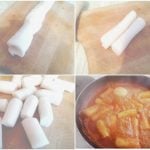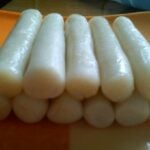Hello everybody!
Today I’ll show you how to make a homemade Korean rice cake called garaetteok.
Most of you know what tteok means, right? That’s rice cake. But what about garae? What is it, and what does it have to do with this rice cake?
There are a few theories about that. One of them is that garae comes from the verb gaeuda which means “to divide.” Some people think this rice cake got its name because it’s always “divided” into pieces before it’s rolled and stretched.
The other theory is the name comes from a Korean farming tool called a garae, which is a type of spade. A garae has 2 thick ropes attached to the side of it so that 2 helpers can pull the ropes and make the digging go faster.
Some people think those ropes look a lot like garaetteok, which is how the rice cake got its name.
I had never made homemade garaetteok until I developed this recipe for my website, but when I was growing up in Korea, I watched my grandmother in Korea make it once. I remember her pounding the rice cake with her long wooden pestle in her large stone mortar. Kong kong kong! When she was finished pounding it was elastic, chewy, and soft. Then she started rolling out pieces of it with her hands.
Rolling and stretching, rolling and stretching, until it became long like a rope.
I must have watched her pretty closely because my memories of her working are very vivid! And I also remember her huge smile when she saw me watching her. It was not easy work, and she probably sweat a lot, but she ever frowned.
Developing this recipe, I realized how much hard work it must have been for her. I have a microwave to help me, and I am only making a small amount. She made a lot more, and all by hand. Now I really understand how much work it was, and she still had the energy to give me a smile.
Several hours after she made it, the rice cake would get a little dry and hard. Then she cut it into thin discs for rice cake soup. I remember that she used to cut it straight across, not diagonally, so each rice cake looked exactly like a coin.
I miss her and I miss her smile. She passed away long time ago.
You can use a microwave or a steamer to make garaetteok, whichever one you have at home and feel comfortable with. The dough ratio is a little different depending on which method you use, so be sure to use the right one.
After it’s made, you can cut and prepare it for tteokbokki or tteokguk. Both methods are described below.
A note about short grain rice flour
The flour you buy at your local store or the flour you make may have more or less moisture in it than the rice flour I use in this recipe. This is because of many different things like how long it’s been in the freezer in the store, or the atmospheric conditions where you live. You may need to add more or less boiling water, depending on how dry or wet your short grain rice flour is.
Ingredients
- 2 cups of short grain rice flour (buy it frozen, or make your own)
- ½ ts kosher salt
- ¾ cup of boiling water if using a microwave, 1 cup of boiling water if using a steamer (you may need more or less depending on how much moisture is in your short grain rice flour, see the note above)
- 1 ts toasted sesame oil
Directions
- If you bought frozen rice flour from a Korean grocery store, put it in the fridge overnight until it thaws out and the flour becomes a powder. If you made your own rice flour, you don’t need to do this
Making rice cake with a microwave:
- Combine the rice flour, kosher salt, and boiling water in a bowl. It should have the consistency of the mixture in this photo:

- Cover it with plastic wrap, leaving a small gap to let the steam release. Microwave for 2 minutes.
- Mix the rice cake dough with a rice scoop or wooden spoon.
- Re-cover with the plastic wrap and cook for another 2 minutes.
- Spread ½ ts toasted sesame oil on your cutting board. Put the hot rice cake in the oily spot on the cutting board. Pound it with a pestle for about 5 minutes, until it becomes smooth and elastic.


Making rice cake with a steamer:
- Combine the rice flour, kosher salt, and boiling water in a bowl.
- Line a steamer rack with parchment paper. Add the rice cake dough and steam for about 25 minutes over hight heat.
- Spread ½ ts toasted sesame oil on your cutting board. Put the hot rice cake in the oily spot on the cutting board. Pound it with a pestle for about 5 minutes, until it becomes smooth and elastic. The rest of process is the same as the method of using a microwave oven.



Prepare the rice cake for tteokbokki:
- Cut it into 8 equal pieces, then roll each piece out into a 4 inch long cylinder shaped rice cake.
- Put ½ ts toasted sesame oil onto your hands and gently rub the rice cakes to coat them in a thin sheen of oil. This will give them a nice flavor and keep them from sticking to each other.



Prepare the rice cake for ddeokguk (rice cake soup):
- Cut it into 2 equal pieces, then roll each piece out into two 10 inch long cylinder shaped rice cakes.
- Let them cool at room temperature for several hours, then slice diagonally into thin discs.
- Use right away, or put in a plastic bag and freeze for later use. This amount is for 1 serving of ddeokguk, so if you want to make two bowls of soup, make two batches.
Maangchi's Amazon picks for this recipe
It's always best to buy Korean items at your local Korean grocery store, but I know that's not always possible so I chose these products on Amazon that are good quality. See more about how these items were chosen.




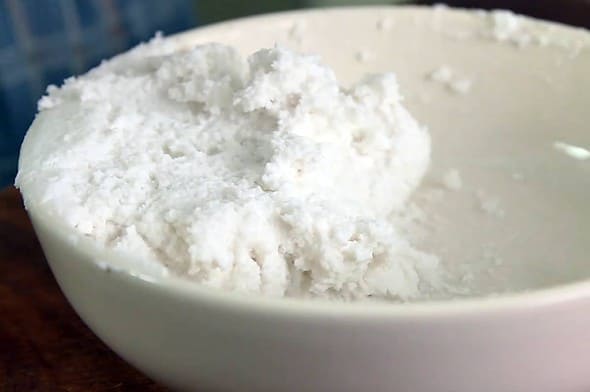
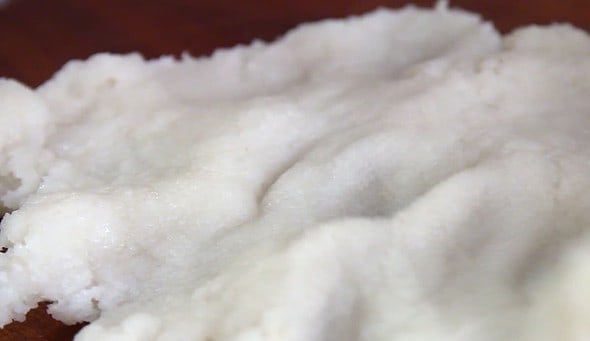
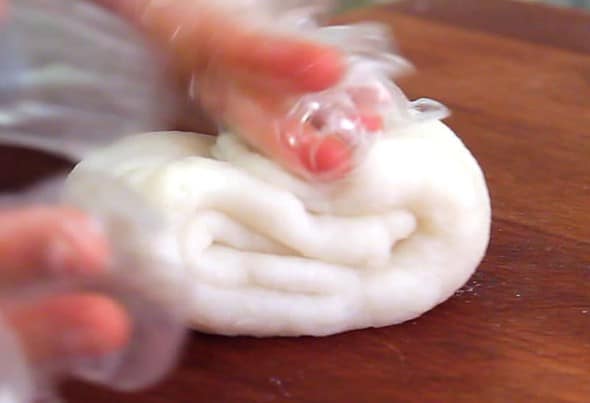
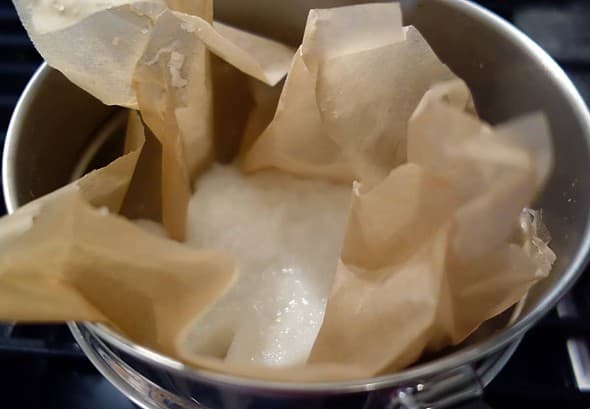
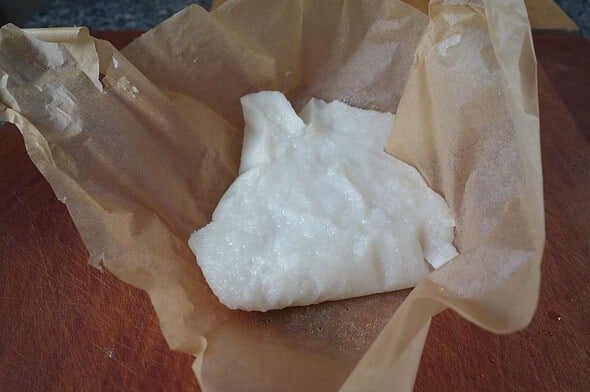
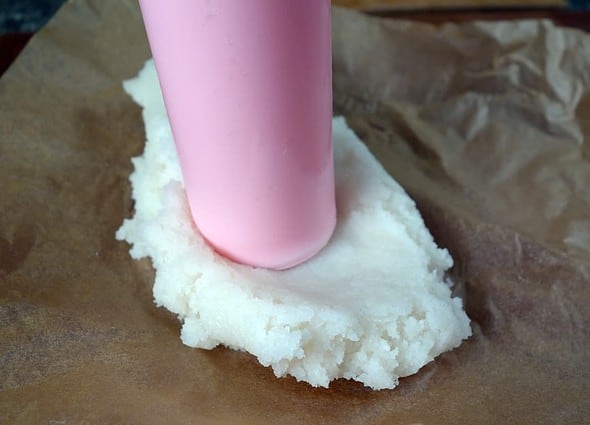
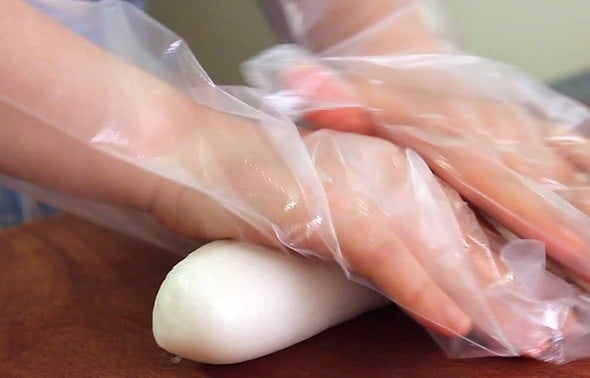
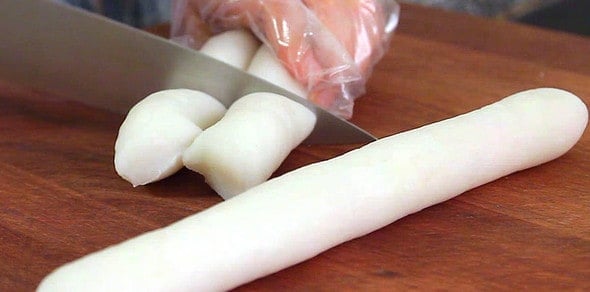
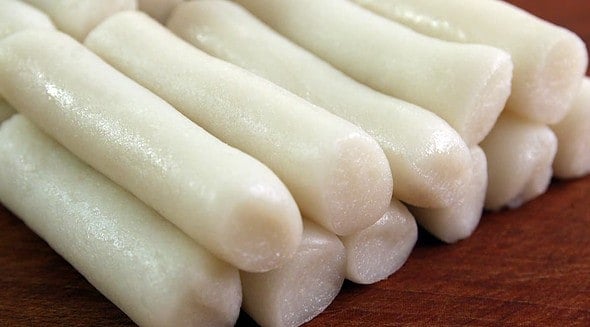
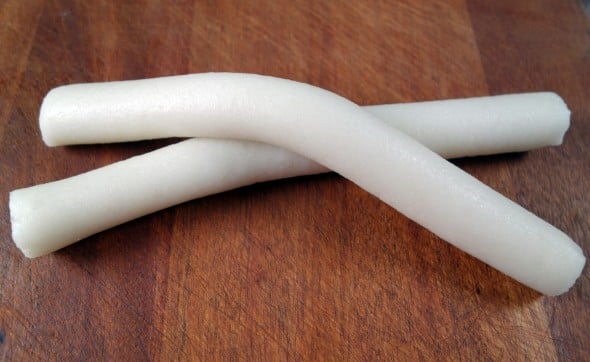
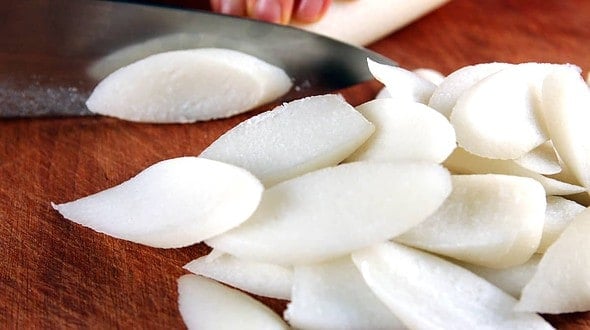


![[OTTOGI] Premium Roasted Sesam...](https://m.media-amazon.com/images/I/41DixbNS9AL._SL160_.jpg)

























